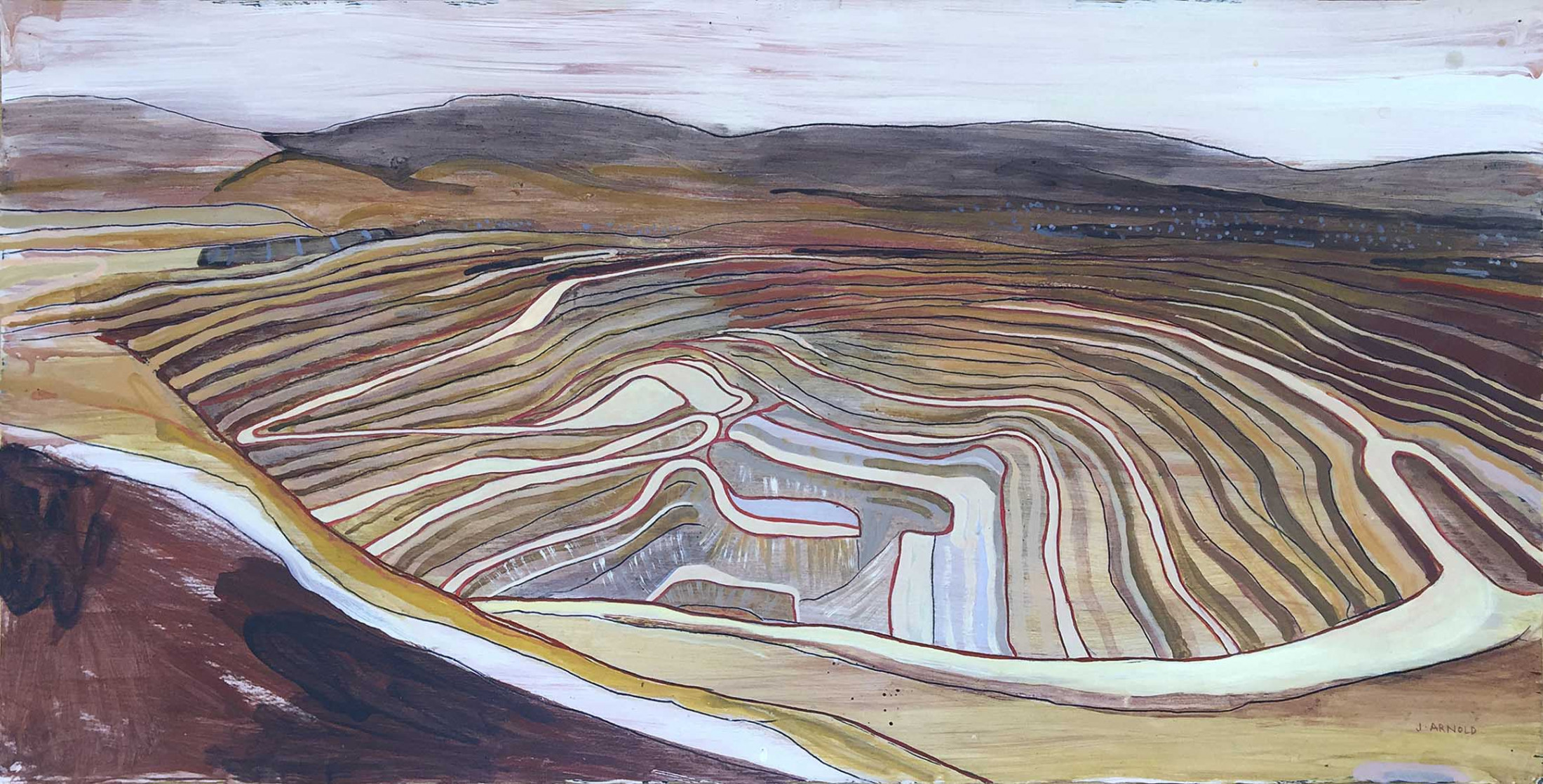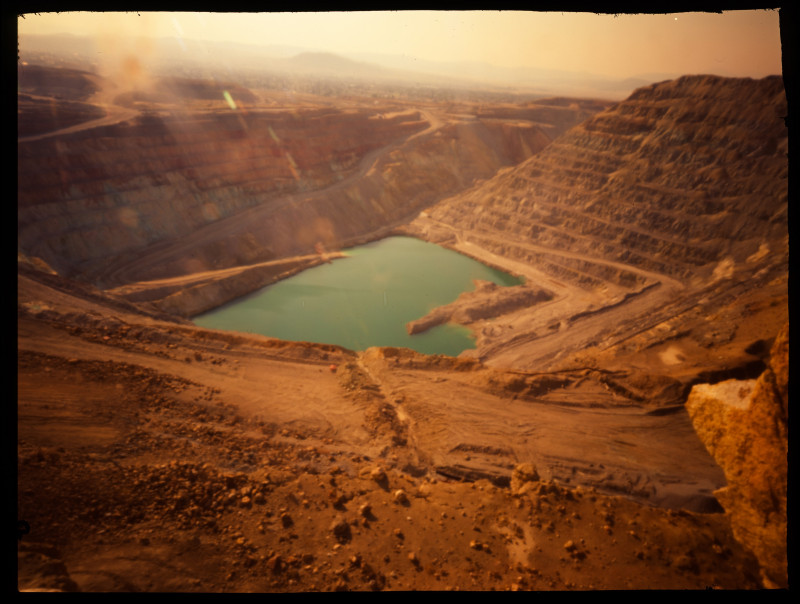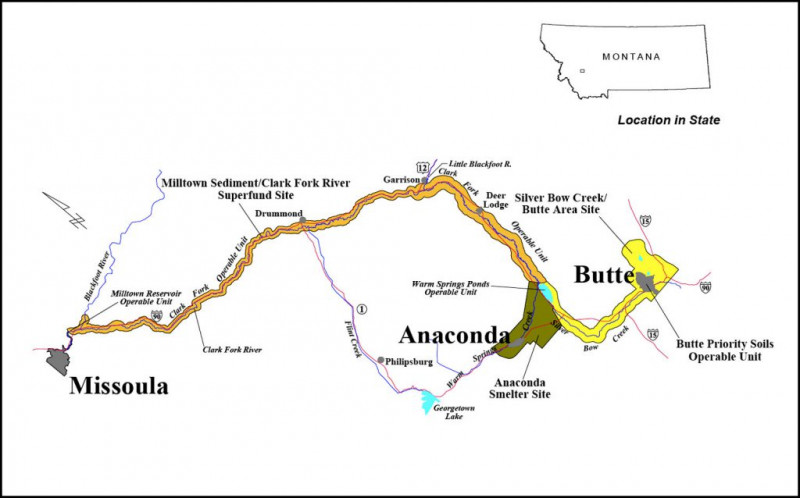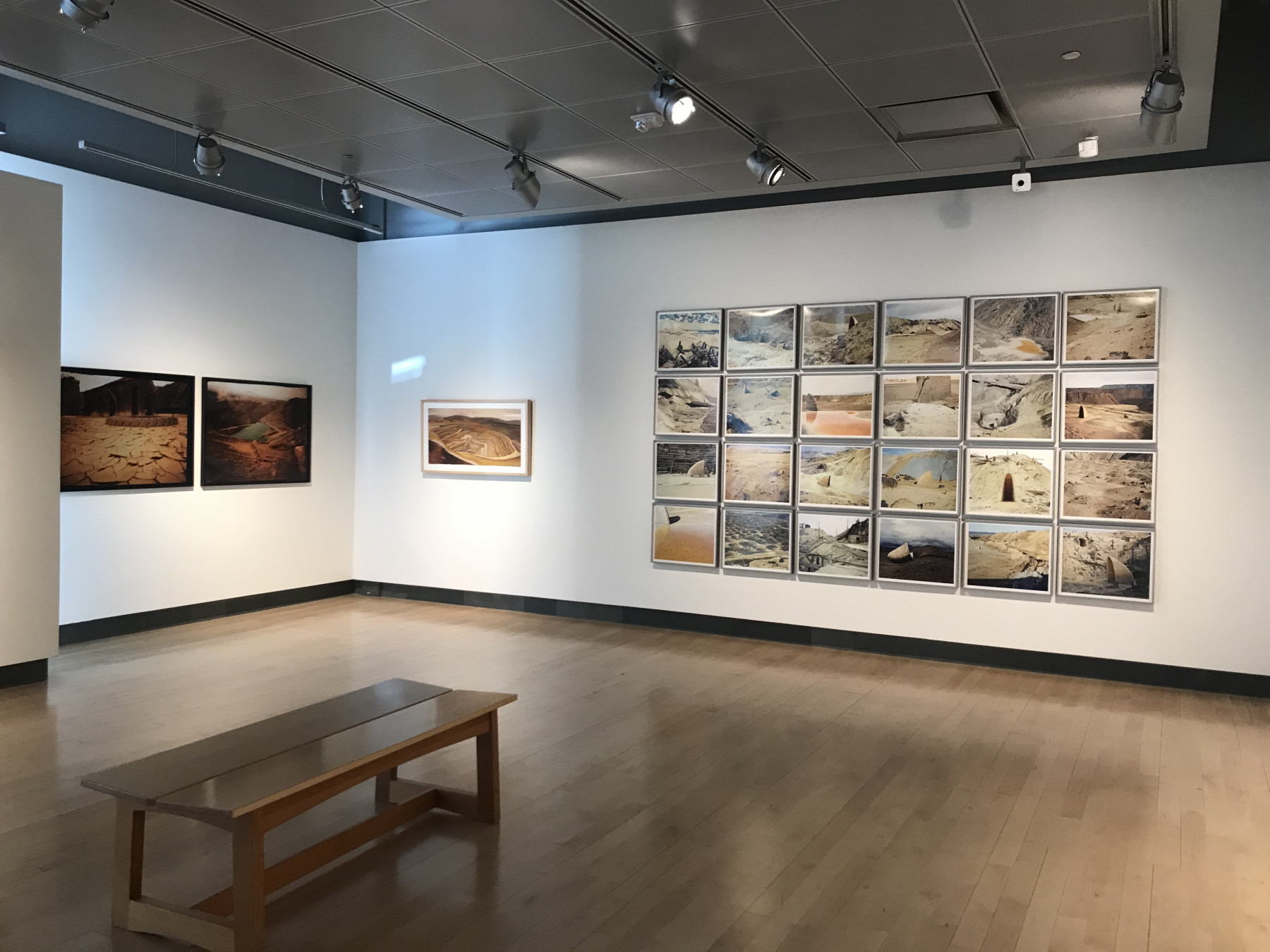Edge Of The Abyss
June 8 2021 - October 9 2021
Artists Picturing the Berkeley Pit
This summer, MAM is participating in EXTRACTION: Art on the Edge of the Abyss, a special project of the CODEX Foundation. It aims to produce a multimedia and multivenue art experience that investigates extractive industry in all its forms. With sites stretching throughout the United States and abroad, MAM is part of an organic collective of participating artists, art venues, curators, and arts supporters.
Contemporary artists living and working throughout the region have a history of making creative works and actions in response to the largest open-pit mine in Montana: the Berkeley Pit in Butte. Jean Arnold, Eben Goff, Kristi Hager, Marcy James, Peter R. Koch in collaboration with Didier Mutel, and Nolan Salix present a dynamic range of perspectives in reaction to this undeniable feature of the Western landscape and psyche—from awe at the grandeur of landscape to concerns about land use and environmental impact.

Jean Arnold, Berkeley Pit: Operational (MT Copper), 2012, oil on canvas, courtesy and copyright the artist.
Peter R. Koch of the CODEX Foundation explains the origins of the Extraction: Art on the Edge of the Abyss: "I know about [mining and fragmented communities] because I experienced first-hand the toxic waste from what was, at the time, the world’s largest underground, and later, open-pit copper mine flowing down the Clark’s Fork of the Columbia River through Missoula, my hometown, each spring depositing layers of toxic mud behind the Milltown Dam. We were told never to eat fish caught in the river. Being an avid fisherman and an aspiring aquatic biologist, I deeply resented the entire industry and its apologists...[the aim] of Extraction Art is to develop an atrocity exhibition that documents the destruction brought by copper and timber extraction in Western Montana [and the] exploitation of the Bakken Formation—the deposits of coal, oil, and natural gas that spread across Montana, North and South Dakota, Alberta, Saskatchewan, and Wyoming."
Related events:
Exhibit Reception // August 6, 2021 // Open to the public!
Related press:
Digging deep: Artists around the world raise a ruckus over resource extraction - The Economist - July 12, 2021

Marcy James, Continental Pit: View from Inside, 2016, archival pigment print, copyright the artist.
Artists featured in this exhibit:
- Jean Arnold
- Robert Bringhurst
- Eben Goff
- Kristi Hager
- Marcy James
- Peter Rutledge Koch
- Didier Mutel
- Nolan Salix
History of the Berkeley Pit
Mining began in Butte around 1864 and copper was discovered in 1888. Traditional underground tunnel mining gave way to large-scale industrial excavation when an open pit mine was begun in July 1955 on the site of the historic Berkeley shaft, which lent its name to the pit. As the pit grew, it consumed the working-class communities of Meaderville and McQueen. Over 1.5 billion tons of material was eventually removed from the pit before it ceased operations on Earth Day in 1982. The pit measures 7,000 feet long, 5,600 feet wide with an approximate depth of 1,780 feet, and can be seen from outer space. When mining and water diversion ceased, the pit filled heavily acidic (2.5 pH level) water laden with heavy metals and dangerous chemicals leached from the rock. Called the most contaminated body of water in the nation, the pit boasts toxic levels of copper, arsenic, cadmium, zinc, and sulfuric acid. The pit is one of seventeen Superfund sites in the state and is the largest Superfund site by area in the United States. In October 2019, water from the pit was treated and released to Silver Bow Creek for the first time ever.
Learn more about the Berkeley Pit via PitWatch.org

Map illustrating the entirety of the Berkeley Pit Superfund site and the connections to surrounding waterways. Courtesy of PitWatch.org.


